Unprocessed FAQ: Beverages
Sep 23, 2019

When people first hear of the October Unprocessed challenge, their first response is likely to be “But what about beer?! What about wine?! What about coffee?!”
So I first tell them not to panic. Then I explain how I apply the Kitchen Test to these and a few other beverages. Some of them are fairly straightforward, but others have a bit of a gray area, and once again I’ll encourage you to make your own thoughtful decision about where, exactly, you want to draw the line.
Beer
This is an easy answer, since beer can be made at home, and frequently is. I have several friends who make phenomenal (award-winning!) beers at home. I’ve brewed a few times with my friend Sean — he even mills the barley right before making the mash. Oh yeah, and he grows his own hops, too.
The ingredients in beer are grain, water, yeast, and hops. Some “specialty” beers may add herbs or spices, and some may add other flavorings (and of course they don’t put them on the label–so those can be a pitfall), but fundamentally, beer is just those four ingredients — and it’s a surprisingly low-tech process to turn them into beer. So any traditionally made beer should pass the test with ease. Look for craft beers from smaller breweries, as some of the large breweries may use other ingredients such as corn syrup or dextrose (or genetically modified corn).
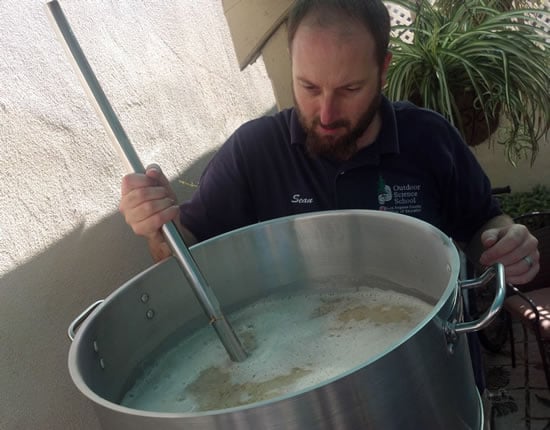
Wine
Several of my friends make wine at home, too. (Clearly, I hang out with the cool kids…) Traditionally, wine is made with just two ingredients: Grapes and yeast.
There is the question of sulfites, though. Sulfites are a naturally occurring part of the winemaking process, but most winemakers add additional sulfites to help prevent spoilage. So you’ll need to decide for yourself if you’ll seek out no-sulfite-added wine (some are available; they’ll say it on the label). For the conversation on sulfites from a previous challenge, please read Dave’s explanation and Tracy’s clarification.
Other ingredients and additives may also be used in winemaking— and they’re not likely to be on the label — such as gelatin, isinglass, albumin (from egg whites), charcoal, acacia (gum arabic), and calcium alginate. These ingredients are not usually detectable in the final product.
Many of them might pass the kitchen test, but others might not. Also, many are from animal sources (the charcoal may come from animal bones, and isinglass comes from fish bladders), so vegans may want to look for vegan-certified wines.
Personally, I’ll drink my friends’ wines first (hint, hint), and once that’s gone, I’ll still enjoy commercial wine in October, especially if they’re biodynamic.
Liquor / Spirits
Although I don’t recommend distilling your own (and it may be illegal in your area), it’s certainly possible to do this at home. Just skip the gimmicky flavored ones, like “Cucumber Vodka” (Easy solution: Just add your own, real cucumber!).
Of course, it depends on how picky you want to be. If you’re going all-out, you may wish to consider what sugars/starches are being used to feed the fermentation process.
Also note, if it’s a bottle of drink mix that contains alcohol (think “Margaritaville”), they’re not required to disclose the ingredients. Those are probably sweetened with high fructose corn syrup, and often contain artificial flavors and colors, but you have no way of knowing for sure.
Coffee & Tea
Yes, you can have coffee and tea! Although it would be difficult (and time-consuming) to grow, harvest, and roast/dry your own coffee or tea, it’s certainly possible.
Try this fun project: Buy some green coffee beans (they’ve already been cleaned for you), and toast them in your popcorn air popper (do it outside! it’ll stink!). Or you could grow your own coffee plant, and then wet-process the beans yourself. Totally doable at home (but how much time do you have?).
As for tea, check out Sunset Magazine’s One-Block Diet from a few years ago: They made their own tea, too. (They apparently ended up with only enough tea leaves for a cup or two, but still, they did it!)
Just remember to keep an eye on what you’re putting into your coffee or tea! Powdered creamer and flavored creamers (which usually don’t have any actual cream in them) are not going to pass the test (seriously, check out their ingredients). I’ll be posting a FAQ on unprocessed sugar and sweeteners soon.
One other big pitfall with tea: Be careful to read the ingredients list! A lot of teas now add “natural flavors” which don’t pass the kitchen test.
Milk
Theoretically, milk should pass the kitchen test with flying colors, right? But this is actually one of those gray areas which I encourage you to consider ahead of time.
A couple years ago I shared my thoughts on what kind of milk to drink, and I discussed some of the processing that modern milk goes through. Here’s what happens to most milk before it gets to you: To start, it’s combined with milk from hundreds or thousands of other cows. Then it’s spun in a centrifuge to remove the fat. Next, the fat is added back into the milk to the desired percentage, and the fat is homogenized [this is good description, though from an obviously biased source] to keep it from floating back up to the top. Then it’s pasteurized and finally packaged up and sent on its way to the store.
So even most “whole” milk is not really whole anymore. It’s been split apart, put back together, and heavily processed. Some of those processes you could do at home (pasteurization, for example, is just heating), but others, not so much.
Our favorite milk right now is St. Benoît Whole Jersey Milk. It’s organic, non-homogenized, pasture-raised, single-farm milk from a small farm in Sonoma, CA, sold in reusable glass bottles. Strauss Family Creamery is also a wonderful choice. Yes, these are more expensive than the mass-produced stuff, but they taste amazing–and don’t upset my stomach the way homogenized milk does.
If you can’t find either of those, see if you can locate Organic Valley Grassmilk which may be distributed more widely.
I encourage you to do your own research and thinking on this, try to find out as much as you can about the milk you and your family is drinking, and decide where you want to draw the line for yourself. Personally, this October I’m going to drink only non-homogenized milk from grass-fed cows.
Soymilk & Nut Milks
You can actually make soymilk and nut milks at home fairly easily. Here’s how to make soymilk, how to make almond milk, how to make coconut horchata.
However, most commercially produced faux milks contain other ingredients that you wouldn’t use at home. Carrageenan, for example, is a thickening agent that’s derived from seaweed. (It also upsets my stomach; your mileage may vary.) Here’s a comparison of two popular brands.
West Soy’s Organic, Unsweetened Soymilk: Filtered Water, Whole Organic Soybeans.
Silk’s Organic, Unsweetened Soymilk: Organic Soymilk (Filtered Water, Whole Organic Soybeans), Carrageenan, Sea Salt, Natural Flavor. Plus added vitamins & minerals: Calcium Carbonate, Vitamin A Palmitate, Vitamin D2, Riboflavin (B2), Vitamin B12.*
* Update 2016: It looks like Silk has removed the Carrageenan from this product, and replaced it with Gellan Gum. But it still has Natural (AKA Fake) flavor added.
So read the ingredients, and go from there!
Coconut Water & Coconut Milk
It’s a similar story with Coconut Water and Milk. Coconut Water ought to be just the water that comes out of the inside of a coconut when you crack it open. You’ll need to read the ingredients list to be sure — some producers will add other ingredients to help “flavor” or shelf life. And some are actually “from concentrate.” If anyone has any good coconut water brand recommendations, please share them in the comments.
Traditionally, coconut milk is simply the liquid that comes out of squeezing/pressing shredded coconut “meat.” But you’ve got to watch the same pitfalls — a lot of packaged coconut milk adds flavors, gums, and sugar. So read the ingredient list!
Kombucha
Kombucha has become quite popular in the past few years, as it’s like a natural soda with the potential benefits of active cultures. If the store-bought stuff is made in the traditional way, it passes the kitchen test — since it’s fairly easy to make Kombucha at home. Again, read the ingredients!
Juice
When it comes to store-bought juice, I’m going to discount the obvious offenders (“Sunny D” isn’t even close to juice). But what about “100% Juice?”
Let’s take orange juice, as an example. Oranges aren’t a year-round crop, so in order to get “not from concentrate” O.J. anytime we want, the juice folks squeeze the oranges when they’re in season, and store the juice in large tanks. To keep it from spoiling, they remove all the oxygen.
Unfortunately, that also removes the flavor, so they have to add the flavor back in. Legally, in order to maintain the “100%” moniker, the flavors need to be derived from oranges themselves, but beyond that, details are sketchy. Each company has its own “flavor pack,” which ensures their own unique, consistent flavor profile. Here’s more detail, if you want it.
So does that pass the kitchen test? For me it doesn’t, but I’ll leave it to you to decide for yourself. In the meantime, if you can get your hands on a few actual oranges, try a side-by-side comparison, and then let us know if you think the boxed “100% juice” really does taste the same as truly fresh-squeezed.
Soda
Obviously most commercial sodas like Coca-Cola or Pepsi aren’t going to pass the test. Besides the processed sugars, there are all sorts of other additives that wouldn’t be considered whole foods.
But there are some fizzy waters that do pass muster. “Seltzer” — which is just carbonated water — should be okay. (We make our own at home, using a Soda Stream… but skip their syrups.)
The name “Club Soda” is often used interchangeably with seltzer, but it may have other salts or minerals added. The ingredients in Canada Dry Club Soda, for example: Carbonated Water, Sodium Bicarbonate, Sodium Citrate, Potassium Sulfate, Disodium Phosphate.
Those minerals may sound worse than they are, but at least for October, I’m going to stick to plain water (sparkling or otherwise) without the extra stuff.
Water
A couple of years ago, reader Jennifer asked about water — which I hadn’t even considered until then. She pointed out: “I realized that although water is one of the healthiest parts of my diet, it is also the most heavily processed item I consume. In this case the processing is mostly done to take impurities OUT, but they also add things like fluoride in.”
My thinking is that we need to be smart about this. In North America, you don’t want to drink water directly from a stream or lake without purifying it first (giardiasis is no fun) – so even if you were to take the kitchen test to the extreme and retrieve your water only from a stream, you’d still need to boil or filter it to keep from getting sick.
I’m a big fan of municipal tap water – I’m incredibly grateful that here in the U.S. we have as much clean, safe water to drink as we want, and it’s essentially free (Flint, Michigan notwithstanding…) We do have a small under-counter filter on the cold water line that helps improve the taste. As with some of these other beverages, I’ll leave it to you to decide where you draw the line. Perhaps you’ll eschew all store-bought bottled water in October, and stick to refills from the tap? Or if you don’t like tap water, consider upgrading from cases of individual bottles to refillable five-gallon bottles? If nothing else, it’s certainly better for the planet.
—
Did I miss any beverages you want to know about? Any other details or information you want to add for any of the above? Please leave a comment and let’s discuss!
If you haven't taken the October Unprocessed pledge yet, please do! And then encourage your friends to join in -- it's a lot more fun that way!
Photo Credits:
“Sean Making Beer” courtesy of Sean.
St. Benoit Milk and Yogurt, courtesy of St. Benoit Creamery.
“Juiced” copyright 2008 ashleigh290, used under creative commons license.
Los Angeles Department of Water & Power Drinking Fountain is from my own Instagram feed.

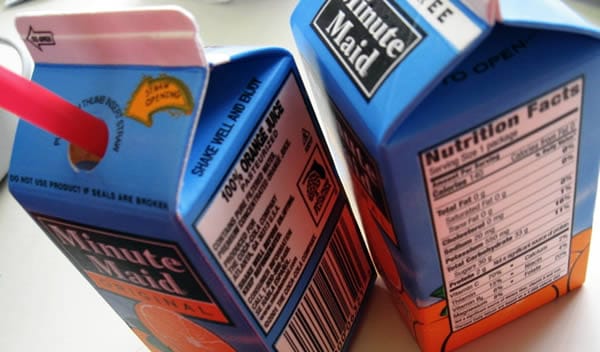

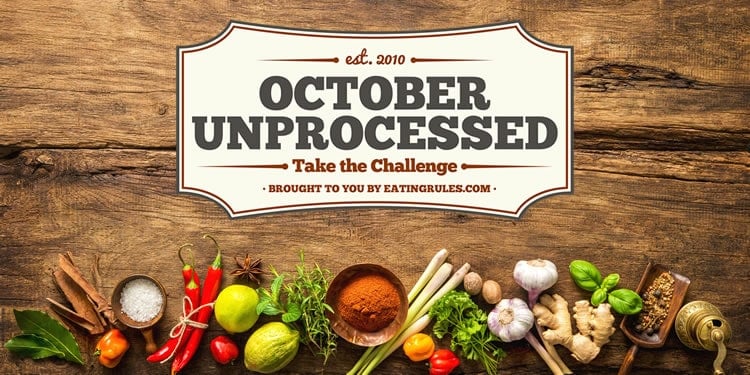


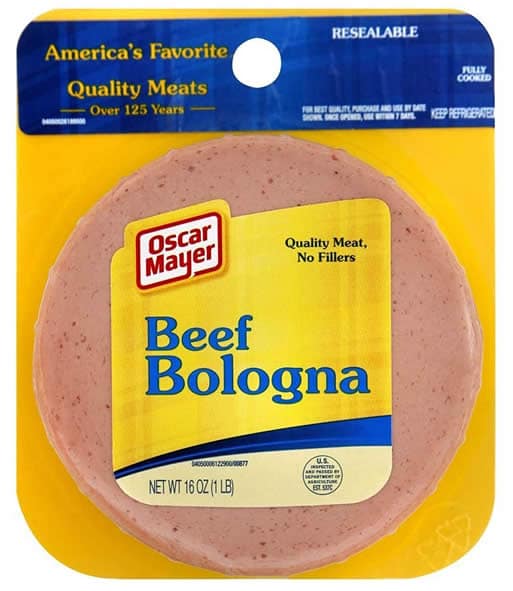

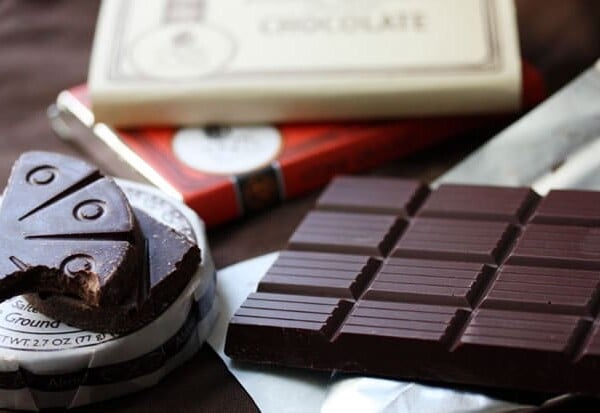
















I have been making my own kombucha for 4 months now, and it’s incredibly easy to do! My friend Diane had a shareable scoby, which I happily took, even though I had no clue what I was getting into. I started using plain ol’ C&H granulated sugar during the first few batches, but I’ve discovered an organic brand of granulated sugar that’s sold on Amazon called Itaja that I’ve been using ever since. You can find it here: http://www.amazon.com/Itaja-Organic-Granulated-Sugar-10-Pound/dp/B0086VWAYO. Will this safely pass the kitchen test? I also use organic black tea as much as possible.
Also, for those of you that have a Trader Joe’s nearby that use non-dairy milk, they sell organic unsweetened soy milk that only has two ingredients: filtered water, and organic whole soybeans.
Thank you so much for talking about milk. I’ve recently discovered St. Benoît Whole Jersey Milk and really like it. I’ve had the same problem with Organic Valley Grass-Fed milk.. The fats clumps up and there is no screw-top. I was wondering why St. Benoit is at the bottom of the list of the The Cornucopia Institute’s national survey: http://www.cornucopia.org/2008/01/dairy-report-and-scorecard #Dairy #Scorecard #Report #FactoryFarms #FamilyFarms . Is there a fee to get rated? Or are they still too new? From what I’ve read, they should receive a 5 or at least a 4.
Hey Bonnie – Thanks for mentioning the Cornucopia Institute’s ratings! It looks like St. Benoit didn’t participate in the survey, so they got “zero” ratings on all the categories: http://www.cornucopia.org/dairysurvey/FarmID_249.html
It does seem a bit misleading to group non-responders in the “Ethically deficient” category… I’d say we can’t draw any conclusions from this. Want to reach out to St. Benoit and see what they have to say? 🙂
I didn’t like the heading, ethically deficient, either. It’s misleading. I will see if they have a contact page.
Hey – just learned a duper EZ, inexpensive way to make your own Coconut milk from a Vitamix demo guy. I happen to have, love, and use my Vitamaix all.the.time, but I bet you could make this with with another powerful blender. Dunno, though.
Coconut Milk
2 cups water
1 cup unsweetened coconut – Optional: toast coconut
Add both ingredients to Vitamix. Blend for maybe a minute. Yield: 2.5 cups unstrained, 2.0 cups strained.
That’s it. Delicious when frozen into cubes, and blended with cocoa powder, a pinch of salt, and maple syrup – unprocessed coconut ice cream!
Who has the time to do most of these things??? Lets get real here ok…We can not go back to the 18th century here and make our own butter..from our own cow!…have chickens..unless you live in a rural setting. You mention SOY…SOY in the USA is now over 90% GMO soy…so unless you want to add Glyphostae to your diet..or know for sure your SOY is not GMO soy then it is best left alone.
So I Googled “Non-Homogenized Milk Cleveland” and found this farm! And they sell near my house. Located out of Wooster. http://www.hartzlerfamilydairy.com/oh-hormone-free-milk/store-locations
WOW… they are sold 3 blocks from me! I have been looking for non-homoginized milk to make gelatto foreven!!! Thank you for finding them!
What about cheese and other foods made with milk? How does one find dairy products like yogurt or cheese that have not been made using homogenized milk? My thought is to check out local dairy farms, or make these foods myself, but are there any other options out there for when one is short on time?
What about sparkling water? A lot have “natural flavors”…the problem with “natural flavors” is the raseberry and strawberry flavors are sometimes retrieved from a beavers anal glad (not joking look it up!). How natural and yummy does that sound?! I have a friend who makes her own sparkling water, I should look into that! It’s interesting to do this challenge in October with Halloween being a huge sweet tooth holiday! I eat organic and locally grown foods often. My biggest challenges will be having time to make meals and my sweet tooth. I have a 1.5year old boy I have to feed so that’s why food prep and making meals can be difficult.
Hi Frances – Plain sparkling water is just fine. We actually have a Soda Stream and make our own carbonated water at home, so by definition that easily passes the kitchen test. As you say, the important thing to consider is what else is being added to the water. “Natural” and artificial flavors certainly don’t pass muster.
A little while back I did a post with some Soda Stream drink “Recipes.” Because I used bitters, they don’t not all pass the kitchen test for October…but if nothing else, it’ll hopefully spark some ideas of your own.
http://www.eatingrules.com/2011/04/the-sodastream-bar/
My uncle actually makes his own syrup to add to his (also homemade) seltzer water. I think he just cooks the fruit, probably with sugar but I’m not positive (I’m sure you could use a raw sugar or approved sugar). It’s actually pretty delicious! No beaver butts involved 🙂
I made the most wonderful cherry syrup using leftover juice from some frozen cherries that
I decided to dry. These were tart (pie cherries). I added about 1/4 cup sugar (I suspect that for syrup you could use honey). it is fabulous!
the reason I dry my own cherries is that most commercial (even in bulk) dried fruit has added sugar. Try drying your own cherries/cranberries/apricots etc. sometime and decide if they need extra sugar. The tart dried cherries are perfect without sugar. I noticed a post up above about Halloween. The poster might try dried fruit for his child as a treat and many stores sell small boxes of raisins. That’s what I give away for Halloween. Even with whatever processing is done, it’s got to be less processed and healthier than most candy. I get rave reviews from the kids who come by as well!
I found this website which shows which wine,beer, and liquors are vegan:
http://www.barnivore.com/
Go to the tab that interests you or type the brand name in the search box.
What a great find! Thanks Robin.
How about Kefer or Kombucha? I would love to know what you think of either of those.
Here in southern California I would NEVER drink our tap water! There is so much fluoride and CHLORINE added it is ridiculous.
When my kids used to take baths (short showers now), you could literally smell the chlorine in the bathroom once the tub was full. If they forgot to drain the tub at night, in the morning, the smell of chlorine that had gassed off of the water was unbelievable.
I’ll stick with reverse-osmosis, triple-filtered and distilled water. I supposed that is ‘processed’ but only to remove State-added chemicals, not adding anything.
If you set the water out in an open container the chlorine evaporates for drinking purposes. I know in our area, university water in non-fluoridated because it’s a “private” well. There may be places like that where you live where you can sneak in and fill up a jug.